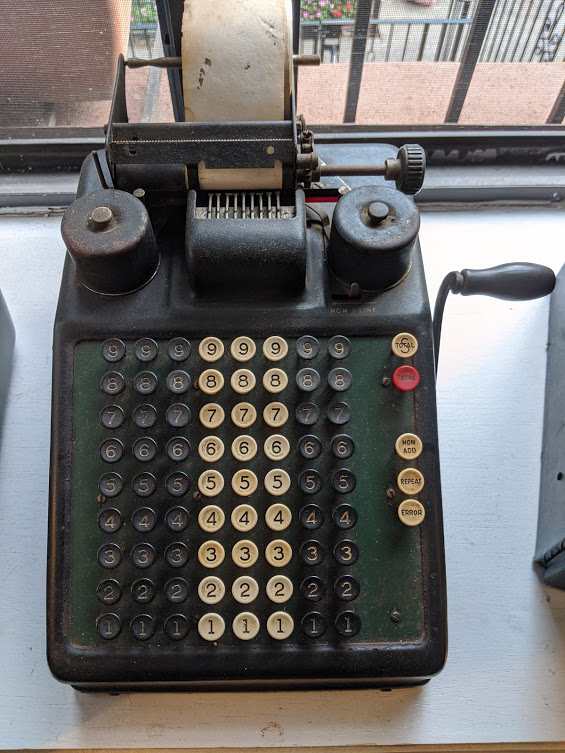The Burroughs Eight Column Portable Adding Machine was passed down to me from my father who inherited it from his mother who used it to tally bowling scores in the 1930s.
Her father used it when he worked as the Assistant Postmaster for the city of Newark in the early 1900s.
The adding machine does pretty much what you would expect: You type in numbers, pull a crank and it tallies the result. A big innovation was that it also printed it out. It weighs about 23 pounds.
I keep this family heirloom next to my desk to remind me how product innovation can change the world overnight, persist for generations and then be replaced in an historical heartbeat.
The business story feels as modern as a Silicon Valley start-up.
In the early 1880s, William Seward Burroughs was a junior bank teller frustrated by the mindless repetition of adding numbers. He left the bank for a machine shop to work on a solution.
Investors put up $700 for 14 shares in a seemingly crazy idea. A few years later the company was incorporated with 1,000 shares and a market value of $100,000. Burroughs had a prototype, but no product, no patent and two young children to feed.
In 1886, he secured a patent for the machine he called the Arithmometer. His investors pressured him to move too quickly, however, and he rushed to market in 1888.
It was a disaster. The machine crank didn’t work properly, resulting in errors. He was so angry he threw a bunch of machines out the window.
It took several years to fix, but then sales took off. Burroughs had predicted a total market of 8,000. (What VC pitch decks today call TAM). Instead, by 1905 the company was selling that many machines in a single year. Each cost $425.
The company adopted aggressive practices, such as acquiring competitors only to shut them down. By 1907, Burroughs controlled 90% of the market for adding machines.
Sadly, Burroughs died in 1898 at the age 41 and didn’t live to see it.
By the 1920s, the company operated in 60 countries and had models that handled a variety of currencies, including the British pound. Assets surged to $430 million from $5 million in 1905.
We know the story in part because the founder’s grandson became one of the most famous writers in America. Ted Morgan wrote an excellent biography: Literary Outlaw: The Life and Times of William S. Burroughs.
Morgan tells a great story about the dedication of the sales force. One rep traveled 1,200 miles to sell a single machine in Sonora, Texas for a $10 commission.
Burroughs manufactured adding machines for 70 years.
It’s hard to imagine that kind of stability and market dominence.
During its heyday it must have seemed like they were spinning gold.
Who could have imagined the electronic calculator?
Things fell apart as quickly as they had taken off.
Burroughs no longer makes adding machines of course, but you can buy one on Ebay, another remarkable disruptor.
